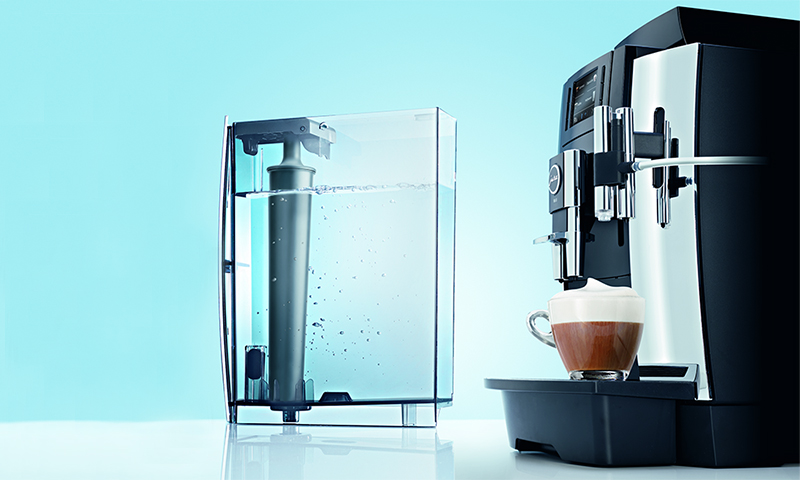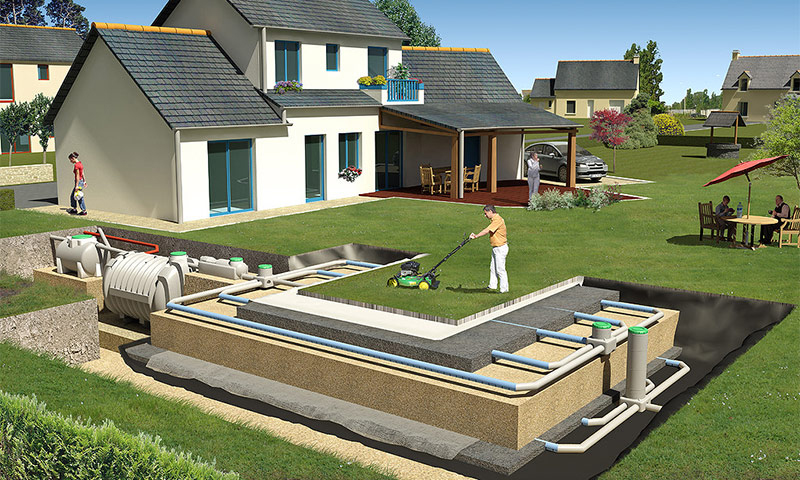Now no one is surprised by bottled water, which is actively bought up by consumers. Mostly it is taken not from springs or wells, but from the water supply, after which, at best, it is being cleaned. The question is, why buy a product of unknown origin and of dubious quality at exorbitant prices, when you can install filters with your own hands and enjoy really clean water at a much lower price. However, not everything is so simple: the installation is preceded by laboratory tests of a liquid and the difficult process of selecting cartridges, which can be from 1 to 6. It is about all this, and this is described in detail in the article.
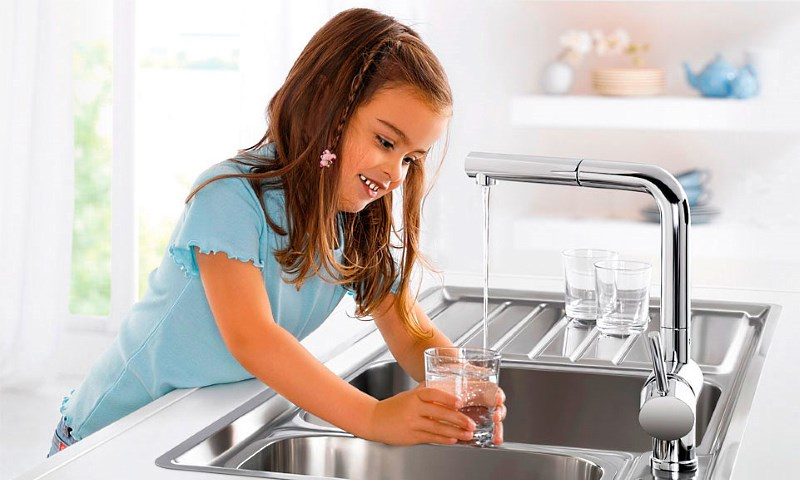
Content:
The best manufacturers of water filters - which company to choose
In the store, as a rule, all water filters of one category outwardly differ little from each other. The difference between them is manifested only in the course of operation: with the same quality of water, one cartridge changes after 3 months, the other - a year.
For this reason we give the names of the best manufacturers:
- New water.
- Barrier.
- Atoll.
- Aquaphor.
- Geyser.
Logically, we recommend reading the article about best water filters and pick one or more filter models.
Kinds of water filters
Jug
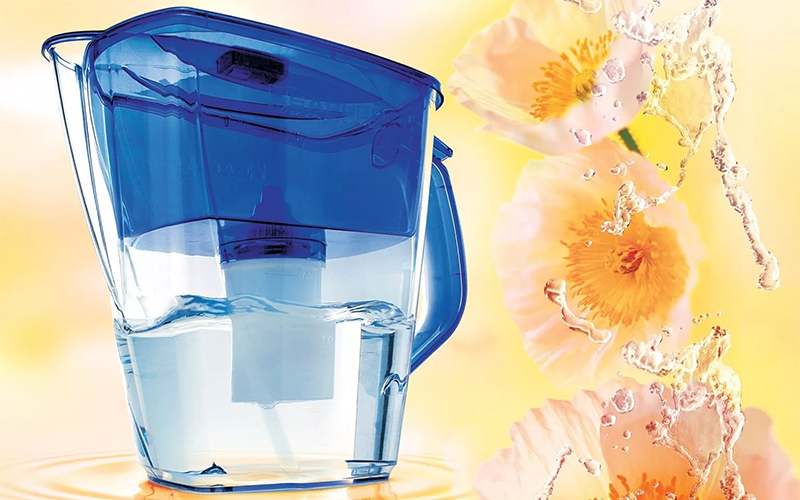
Convenient to use, at the same time, moderately effective - mobile filters-jugs. They represent a transparent container consisting of a polymer case, an upper liner, a filter cartridge, a lid, a nozzle, a handle and functional parts.
During operation, water is poured into the upper compartment, after which, due to the natural pressure, it seeps through the cleaning column and accumulates in the “decanter”. As consumed in the tank refilled fresh portions of the liquid.
Depending on the composition of the water, different cartridges are used:
1. Universal with activated carbon;
2. Softening with ion exchange resins;
3. Healing with fluorine;
4. Degraded;
5. Disinfectant.
Since the columns are short-lived, the mechanical calendar, electronic display and (or) SMS messages periodically remind of the required replacement.
Benefits:
- high enough efficiency;
- mobility: there is no integration into the water supply system;
- the possibility of choosing the optimal volume: from 1 to 5 liters;
- use only food plastics: in high-quality products;
- ease of use and ease of use;
- democratic value and stylish design.
Disadvantages:
- low cleaning rate (which is not surprising): no more than 0.4 l / min;
- frequent change of cartridges: approximately every 45 days;
- total high operating costs.
Such a jug is used to clean slightly polluted water in small volumes.
1. For 1 or 2 people, an instrument of up to 2 liters will suffice;
2. For 5 members of the family enough capacity to 5 liters.
The filter jug is suitable not only for domestic use: it is appropriate in the office, on a business trip, and on a tourist trip, for example, to India.
Attachment on the crane

Unpretentious in operation and special nozzles that are attached to the nozzle of the crane. Such devices have different structural solutions; in contrast to the previous version, not accumulative, but flow-through; in addition, they are relatively more compact.
They are a plastic cylinder, packed, alternatively, with a sorbent made of activated carbon and crushed mineral: porous membranes are protected from opposite sides.Before operation, outdated models are fixed directly to the end of the spout, modern versions are slightly biased to the side and work with the help of a divertor.
Such devices are collapsible and disposable. Their performance is usually up to 0.5 l / min. In many respects, modifications are similar to the nozzles, which are installed on the sink, and are connected to the spout by means of a flexible tube.
Benefits:
- filtration results are better than those of “jugs”;
- relatively high resource - up to 5,000 liters;
- compactness and portability: there is no rigid connection to the water supply system;
- structural diversity: the possibility of choosing between single and reusable versions, and with fillers of different composition;
- simple installation: it takes up to a minute of time;
- affordable cost.
Disadvantages:
- the difficulty of selecting the optimal pressure;
- impracticality of non-separable models;
- with a low spout, the nozzle interferes with washing dishes.
In essence, the nozzle on the crane has the same functional load as the “jug”, with the only difference that it is flow-through and more productive. Use this filter is available at home, at the cottage, at work, on business trips and on vacation.
Maybe it does not give the maximum result, but the difference between the quality of the original liquid and purified water is felt.
System "under the sink"

When performing more serious cleaning, laboratory tests are preliminarily conducted, the results of which select specific filters for their sequential connection and integration into the water supply system in order to create local treatment facilities.
They are installed, as a rule, under the sink - the most convenient place that does not catch the eye: a tap is mounted under the purified water next to the mixer.
The number of columns can be from 1 to 6. The approximate order of cartridges:
1. Mechanical cleaning;
2. Sorption absorption;
3. Partial removal of salts and iron;
4. Disinfection;
5. Mitigation;
6. Deironing;
7. Mineral enrichment;
8. Conditioning.
Under the sink can be installed and reverse osmosis system, which cleans the liquid up to 99%: the water becomes almost distilled - no pollution, no salt, no smell, no taste.
Such filtration is carried out with the help of a membrane, which actually passes only H2O molecules through its pores.
The schematic diagram might look like this:
1. Connector;
2. Coarse filters and activated carbon;
3. Reverse osmosis membrane;
4. Storage tank;
5. Mineralizer;
6. Collapsible crane.
This process can be carried out only at a pressure of 2.8 bar. When consuming the water thus obtained, it must be borne in mind that the distillate washes salt out of the human body.
Benefits:
- deep cleaning of the fluid, as a result, the safety of consumption;
- high performance allows you to make stocks;
- aesthetic installation: the equipment under the sink is not visible;
- availability of the installation system with their own hands;
- payback: regular use of bottled water will cost more;
- long service life: if the product is selected by a reputable manufacturer.
Disadvantages:
- consumption of distilled water is harmful to health;
- high system prices;
- expensive service.
Deep cleaning costs a lot of money, so it is advisable in apartments and private houses, subject to significant contamination of the liquid. After undergoing the procedure of reverse osmosis, the water should undergo mineralization.
Distilled substance is used in pharmacies and cosmetology, as well as in the operation of heating systems and cars, in particular for diluting the acid in the battery.
Water filter selection options
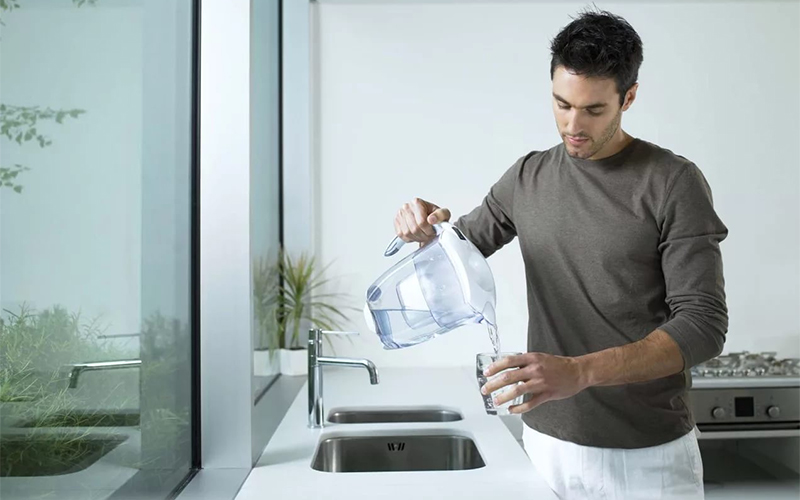
1. If necessary, daily use in small quantities is often selected filter jug. It is suitable for slightly polluted water: cartridges are usually chosen universal. Most of them remove chlorine, which disinfects liquid at water treatment plants.The volume of such products is 1 ... 5 l, capacity - 0.3 ... 0.4 l / min, the degree of purification - from 0.02 mm. Cartridges are replaced about 1 time in 1.5 months.
2. If you need greater performance and quality of cleaning, as well as ease of transportation, the best option - a nozzle on the crane. It works in flow-through mode, it is simply installed on the spout. With frequent business trips, tourist trips and domestic use collapsible model is selected. If purified water is extremely rarely needed, one-time modification is preferred.
3. Mandatory element installed in front of the columns should be a coarse filter. It is a slanting tee with a built-in steel mesh in the form of a cylinder. It is made, as a rule, of brass, integrated into the pipeline, retains sand, pieces of rust and other contaminants with a fraction of 50 ... 400 microns. This part is periodically washed.
4. Based on the composition of the liquid, it is sometimes advisable to install a main filter. It has a cylindrical shape, is made of steel or plastic, cuts into the pipeline, passes 20 ... 50 l / min. The objectives of the product include cleaning of coarse dirt and chlorine, as well as softening and improving the taste. With its presence in the system increases the life of the cartridges.
5. If the fluid is pumped from artesian wells, and is transported by “morally” outdated rusty pipes, the quality at the outlet will differ from the initial one, and for the worse. To remove ferrous iron, a column with a cation-exchange resin in the composition is used, which additionally removes chromium and strontium from water.
6. With the help of ion exchange resins, packaged in a cartridge, water is also softened. As a result, the ions are replaced: Mg and Ca with K and Na. Over time, the ability of metabolic processes slows down: regeneration is carried out with table salt tablets. In this case, magnetic filters can also be used.
7. Moderate sorption capacity possesses activated carbon, which is made from wood and coconut shells. It adsorbs residual active chlorine and organic matter. As a result, unpleasant odors also disappear.
8. Much more effective results provide membrane cleaners. When using microfiltration, a material with a pore size of 0.015 ... 5.0 μm is used, while the flow is carried out under a pressure of 2 ... 3 bar. Ultrafiltration applies membranes with openings of 0.015 ... 0.02 microns: the working head is up to 6 microns. When cleaning by reverse osmosis, the pores do not exceed 0.0001 microns, the pressure must be at least 2.8 bar.
Which water filter to choose
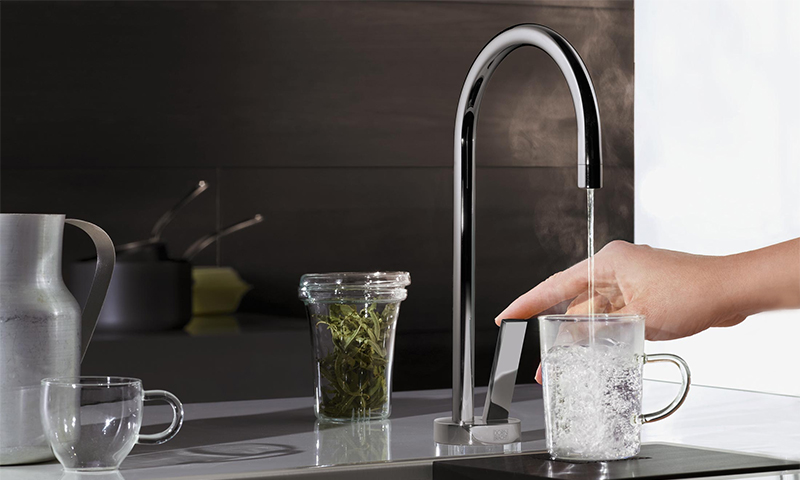
1. Hard water: ion exchange column; obstructive system.
2. Sand and other insoluble particles: primary mechanical filter.
3. Smell of chlorine: 1 of sorption cartridges.
4. Turbid water, methane rendering: reverse-osmosis system.
5. Fish and wood odor: absorbing carbon column and ultraviolet disinfector; post filter and UV treatment.
6. Brackish liquid: reverse osmosis system.
7. Hydrogen sulfide: UV bacterial disinfection and sorption cartridge at discretion.
8. Increased acidity: deferrization column.
9. The smell of chemistry: sorption cartridge with coal loading.
10. Corrosive active liquid at neutral pH: reverse osmosis system; ion exchange column.
11. Smell of oil: reverse osmosis system.
12. Ferrous fluid: absorbing cartridge for deferrization.
13. Phenolic odor: sorption column or reverse osmosis system.
How much is a water filter
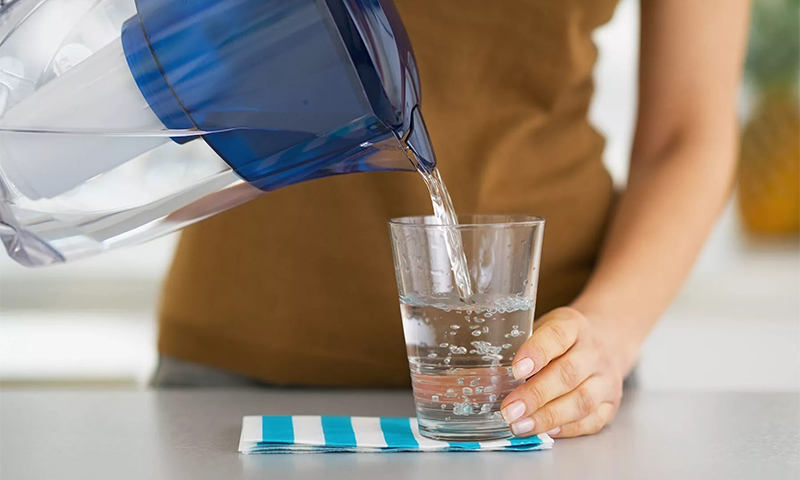
1. Pitcher: 0.2 ... 3.7 thousand rubles.
2. Nozzle on the crane: 0.1 ... 3.9 thousand rubles.
3. Prefilter: 0.2 ... 291.8 thousand rubles.
4. Post-filter: 5.8 ... 123.3 thousand rubles.
5. System "at the sink": 0.6 ... 80.6 thousand rubles.
6. System "under the sink": 1.0 ... 154.7 thousand rubles.
7. System with osmosis: 2.4 ... 56.8 thousand rubles.
It will be interesting to friends too




